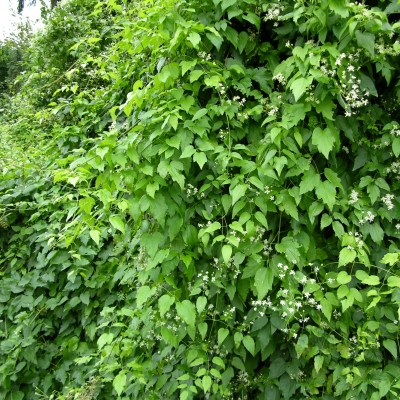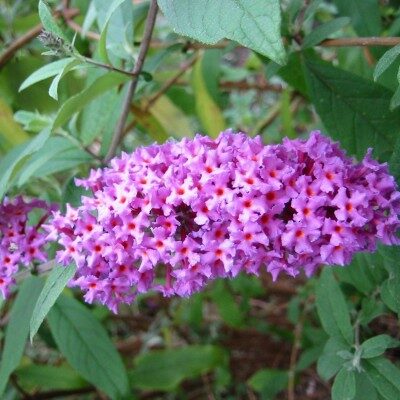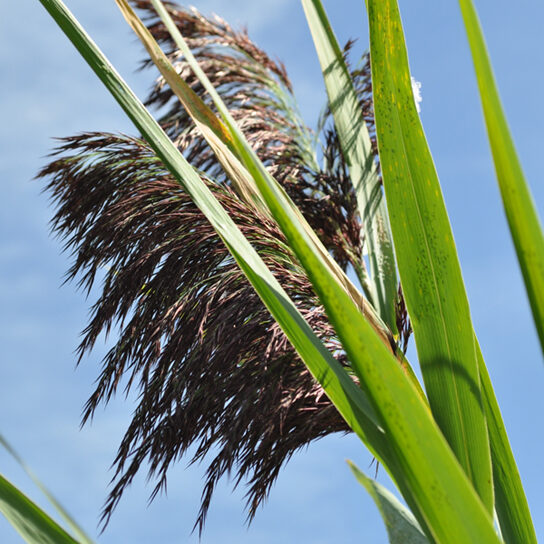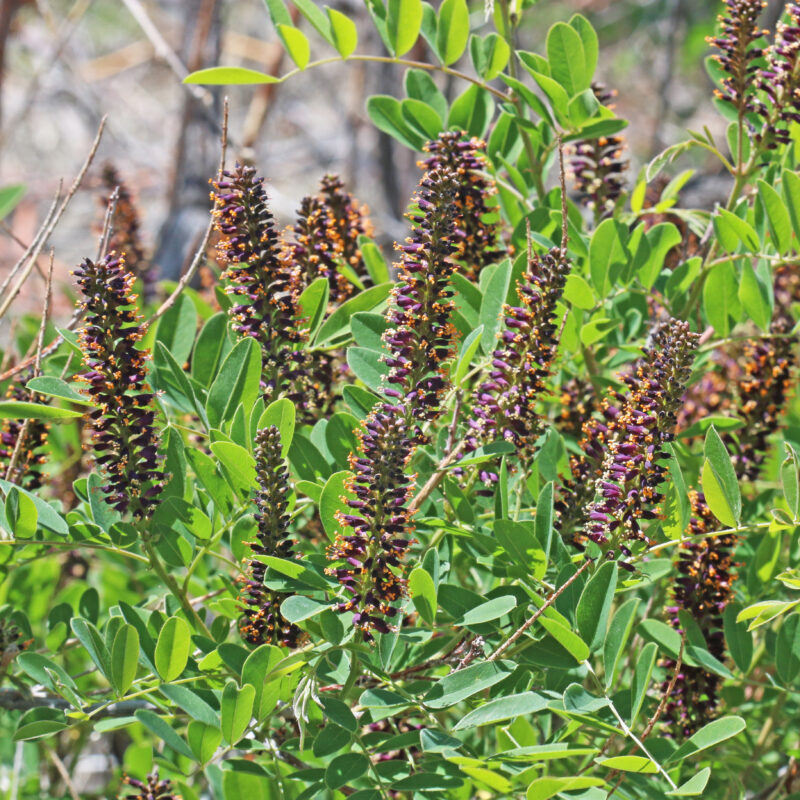
This clematis perennial blooms all summer on woody deciduous vines with stems growing up to 30 yards long. The leaves are compound and coarsely toothed and the flowers are small, greenish-white clusters. The feathery seed heads, which give the plant its name, are easily spread by the wind, water and soil.
Old Man’s Beard (Clematis vitalba), also known as Traveler’s Joy, blankets shrubs and native trees over 60′ tall. Once the tree collapses, the vine continues to grow along the ground in layers several feet thick, preventing any other plants from growing. As the vines kill native trees and plants, it also destroys food sources for native wildlife. This European native vine spreads quickly here, producing more than 100,000 seeds a year, and prefers roadsides, river banks, gardens, hedges, disturbed forests and sheltered areas.
If you’re dealing with vines climbing up trees, first cut the thick vines waist-high. That will allow the upper vines to die. You can dig up the lower vines and those along the ground but be sure to dig out the roots or the vine will return.
Some native plant alternatives are:
- Oregon honeysuckle
- Rock clematis
- Hairy honeysuckle


